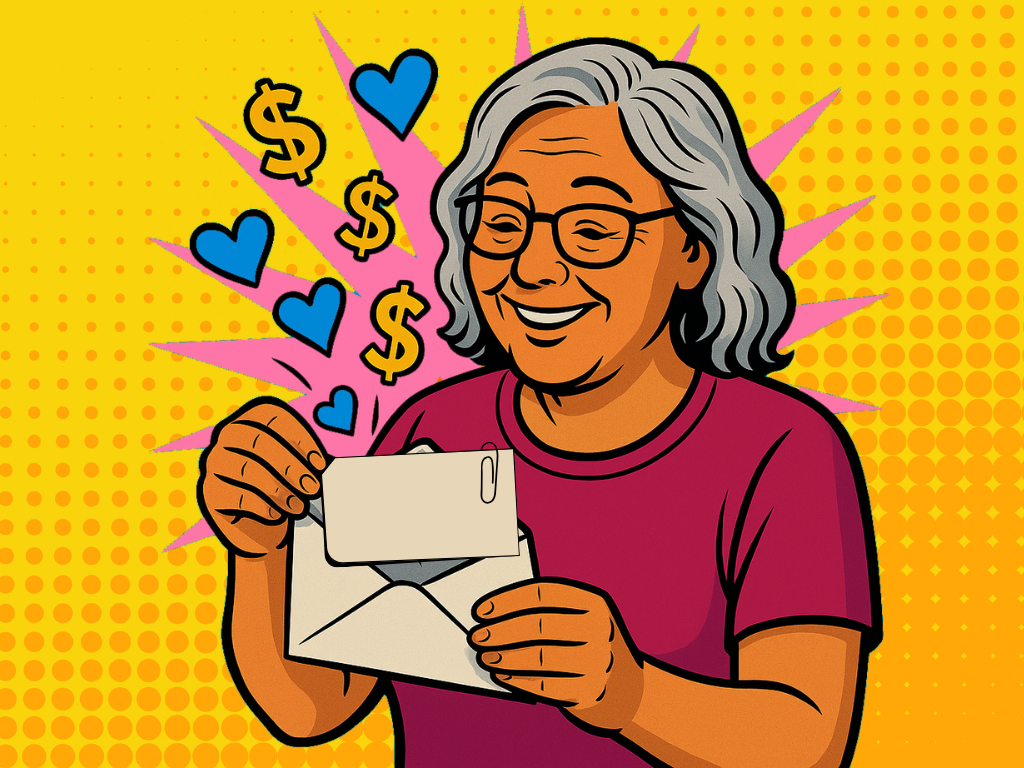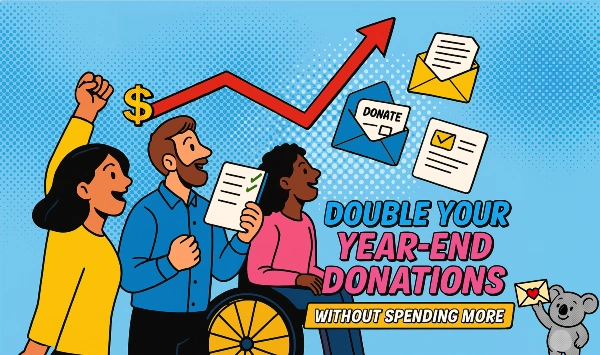Curiosity is one of the most human traits.
When we don’t know what’s going on, we feel compelled to find out. Think monkeys. Or kittens: We perk up and pay a lot more attention when we don’t know what something is. That’s you and me.
And your donors.
Let me show you what to put on an envelope to make sure hardly anyone opens it. Something like:
Children Are Hungry – You Can Save Them with Your Donation Today
Who’s going to open that envelope?
Someone who was just then thinking about what they could do to save hungry children?
That might be a few people. But not very many.
The rest are wondering if it’s going to be raining this weekend. Or they’re worried about that inscrutable message from their health insurance provider that means they might have to pay for that procedure. Or their health. Or the worrying state of the world.
Maybe they’ll notice your teaser. Then they’ll nod knowingly. Because they know exactly what’s in the envelope. No mystery. No need to take the next step.
That’s why “give it all away” envelopes consistently test poorly against almost every other approach.
This is true not just for envelopes, but also for email subject lines.
How about this common subject line:
August Newsletter
What will a recipient think they’ll find if they click that?
Well, a newsletter. Some people might be sitting around wondering when their newsletter will arrive. But not most of them.
Mystery is what works best in most cases.
When you go to donors asking for gifts, you’re really asking for two things: Money is what you’re thinking about. But they won’t (can’t) give you money unless they first give you attention.
And in these message-saturated times, attention may be a more precious commodity than money. Here are some ways you can create mystery in direct mail and email:
The go-to envelope teaser: nothing
In testing and experience, having no teaser on an envelope is almost always something you should consider. It outperforms envelopes with teasers about 75% of the time. This tells us two things:
- Not having a teaser is a very powerful teaser.
- It’s possible, but difficult, to create a teaser that’s better than no teaser.
By no teaser, I mean a range of approaches: It might be that you have your usual logo and address in the upper left corner of the envelope, but nothing else. Or maybe you go with return address, but no logo – and maybe even no name. Or it might be a completely blank envelope, with the only thing there being the recipient’s name and address.
They have all worked well.
Because it’s a real mystery. You don’t know what’s in the envelope, so you are compelled to open it. And once you’re in … you are on the road to making a donation.
Another winner: Odd things
Almost as good, and sometimes better than no teaser are words or other marketing that vaguely hint at what in the envelope or the email. In fact, I believe the all-time best envelope teaser is: DO NOT BEND.
(I was about to say, “Too bad you can’t use that as an email subject line, but why not? I bet it would do well.)
Here are some other odd teasers I’ve seen and used:
- A rubberstamp that says, “LETTER.”
- One that says, “URGENT.”
- One that says “MONDAY” (or any other day of the week.
- Any one or two-word phrase that doesn’t really make a lot of sense by itself.
- A long-winded statement, addressed to the Postmaster to remind them that it’s the law that they deliver this piece to the recipient. Do they need to be told that? No! But it sure ups the mystery factor.
- A printed-on coffee ring or other messy-looking marking.
If it makes you go, “What the heck?” that’s probably a good sign that you have some mystery going on.
The mystery approach can be a challenge. You likely have people on your team – especially those in marketing/communications, who will struggle to wrap their minds around the lack of logic. They’ll want the envelope or subject line to have the same messaging as what’s inside.
That makes sense. But it doesn’t work that well to get people to read what’s inside. And when people don’t open, response is impossible.
The two exceptions to mystery: Emergencies and leverage
Emergencies: When fundraising about an emergency that your donors already know about, a very literal and content-revealing teaser is usually the best approach. When the story you’re telling is known by everyone (or at least your target audience), your job is to enter the story they already know about and give them a chance to make a difference.
Leverage offers: When you have a match offer or one of those “every $1 ships $9 worth of stuff” offers, it’s a good idea to trumpet the good deal on the envelope. “Matching Funds Double Your Donation” is a strong (but non-mysterious) teaser.
Fundraising is a challenging career – but one of the best lives you can choose. To help you advance your career in a proven, logical, experience-based way, we’ve created a new Starter Guide for Your Fundraising Success Path. Download it now and you’ll start your journey to mastery and success in the best career on Earth!
Please share your experience by leaving your reply below. We’d love to learn from your experience.











